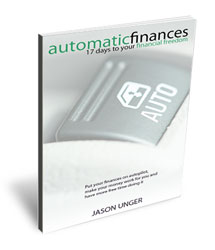
So you’ve signed up for a 401(k) with your job. You’re getting your employer match.
And you’re ready to invest in index funds, because you know that they’re the best option for your long-term savings.
You just got the list of mutual funds to invest in from your employer, you’re looking at the best options to invest in, and …
You see crap.
All crap. Everything sucks.
Everything is actively managed. There’s not a single index fund, or if there is, it’s a closet index fund — an index with a higher than necessary management fee.
What do you do?
Unfortunately, this is an all-too-often occurrence with company 401(k) plans.
For many businesses, their 401(k) provider isn’t focused on helping employees keep their costs low; they simply see a built-in customer base that they want to get as many people signed up (and paying) as possible.
Before I had my own business, the 401(k) provider I had through my jobs was the same company that did the payroll system.
Yes, that’s right.
The company was built to handle our payroll, and they were giving us our retirement choices.
It wasn’t great.
What do you do if you’re in this situation?
How to Pick the Best Fund Among Bad Funds
There’s a few things you want to keep in mind when you need to select retirement funds that aren’t ideal.
Watch your fees. This is the main issue with employer-sponsored 401(k) plans — the fees are out of control, especially compared to funds you can purchase on your own. Investopedia has a good basis of what’s considered expensive:
The current average expense ratio for actively managed mutual funds is between 0.5% and 1.0% and typically goes no higher than 2.5%, although some fund ratios have gone as high as nearly 20%. For passive index funds, the typical ratio is closer to 0.25%. Expenses can vary significantly between different types of funds.
Don’t be on the high-end of the fee range.
Don’t try to get fancy. When I had an employer-sponsored plan, I invested solely in a target-date fund because it was the closest thing to an index fund that was available. It gave me good balance without having to purchase multiple funds (and therefore get hit with multiple fees).
Don’t over-invest. If it makes sense, only invest enough to get your employer match and then focus on other savings or retirement vehicles, like a Roth IRA. You get your free money, but you’re doing your primary (or bulk) retirement savings in an account you control with any funds you want.
Having an employer-sponsored retirement plan (with a match or nonelective contribution) is a great thing; not everyone has it.
So you might consider this to be a first-world problem of sorts, but if you aren’t careful, fees and poor investment choices can take a big bite out of your savings. It’s your money — make it work for you. Don’t pay any more than you have to to make it work.



